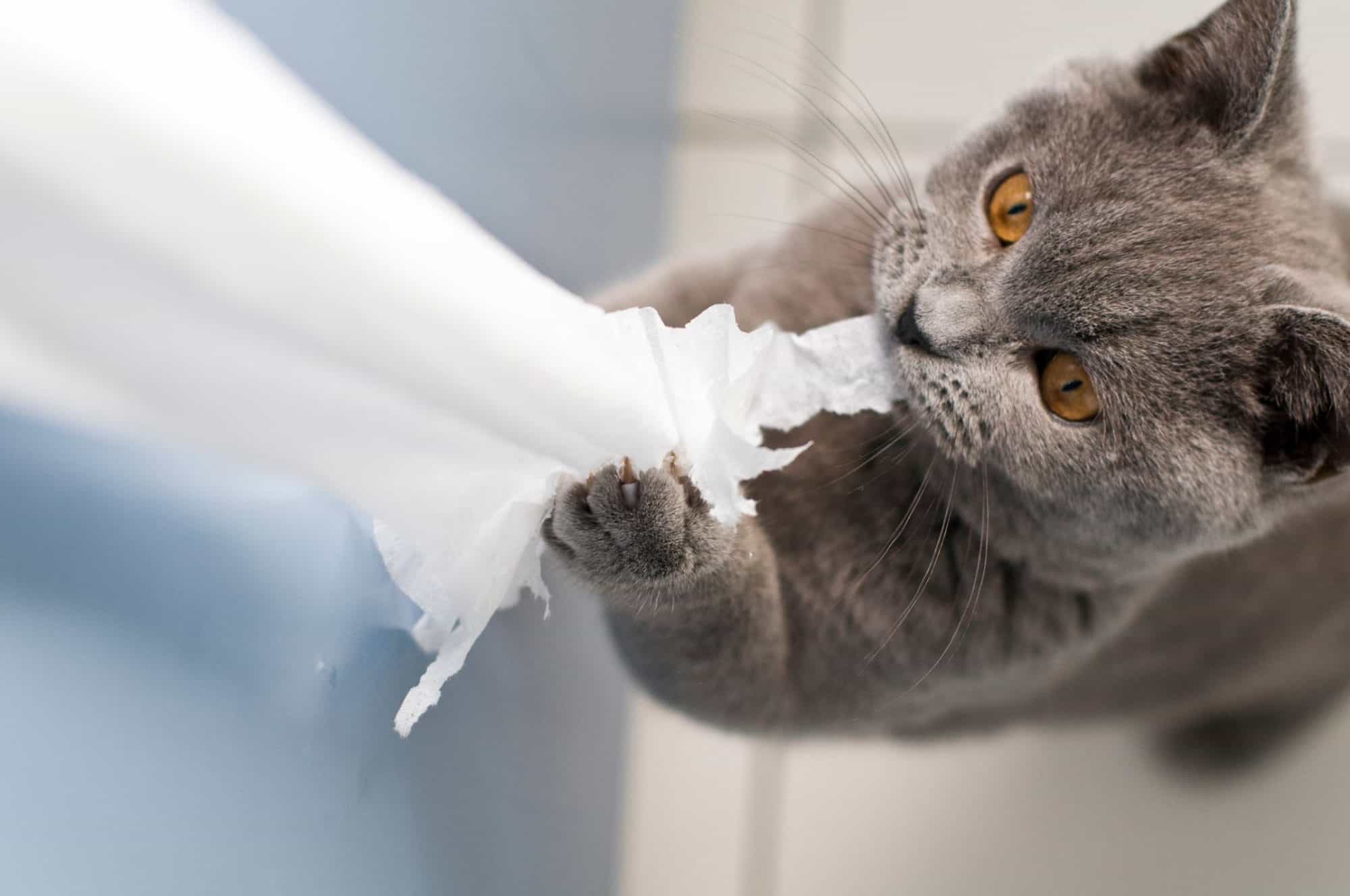The Importance of Understanding Destructive Cat Behavior

Cats can be mysterious creatures, but if we’re really paying attention their communications are loud and clear. Take scratching, for example. Instead of trying to get your goat, cats are merely answering to a feline instinct to stretch, mark their territory, and liberate the dried up outer sheaths of their claws.
Cats aren’t trying to be destructive when they scratch, but they are clearly saying to their owner that they like that couch corner or area rug, and enjoy using it to their benefit. Luckily, it doesn’t take much to curb destructive cat behavior.
Ankle Biters
Have you ever been ambushed by your cat? They lie in wait for you to get near and then they swipe at your ankle and try to bite your calf. What gives?
Well, cats are predators and if they don’t have ample opportunities to employ their prey drive they can become quite feisty. While this may not necessarily be “destructive”, this type of behavior is definitely related to their needs for both physical and mental stimulation.
An Engaging Environment
Indoor-only cats are regarded as safer and healthier than those allowed to go outdoors, but they can quickly become bored or apathetic if their needs for exercise and excitement aren’t met. Be sure to play with your cat every day for at least 20-30 minutes. Keep it interesting by rotating their toys out each week, and give them some hunting to do by measuring food portions into toy mice and hiding them around the house.
Additionally, catios provide excellent enrichment opportunities for cats, and they offer the best of both worlds. Install climbing structures, hide-out zones, and napping stations for a tuckered-out kitty.
Out of Control
Scratching up the furniture, carpeting or drapery are probably the biggest complaints of owners. As we mentioned above, scratching gives cats an incredible back and arm stretch, loosens up dead claws, and due to the scent glands between their toes, gives them a chance to claim their territory.
You can mitigate scratching by providing enticing structures just for them to scratch on, climb, and perch on top of. They may like vertical or horizontal scratching opportunities. Provide various textures and fabrics for them to choose from, such as sisal rope, carpeting, and stacked corrugated cardboard scratchers. Spray Feliway or provide catnip at the base of cat scratchers.
Place large or unattractive objects in front or on top of places your cat prefers to scratch up. All- natural cat deterrent sprays may repel them from marking.
In the Name Of Love
Always offer loads of praise and tasty treats to reward your cat’s good behavior. Scolding or punishing them may actually reinforce the negative behavior you’re trying to stop. Simply ignore it and redirect them to what you want them to scratch.
Destructive Cat Behavior
Other types of destructive cat behavior may include digging in potted plants, eating (non-toxic) plants, aggressive kneading, excessive grooming, increased vocalization and running around at night, and urinating outside the litter box.
Some destructive cat behaviors, like spraying or marking, can be explained by hidden medical issues. Write down your observations and seek help before things get out of hand.
Please let us know if you have further questions or concerns about destructive cat behavior. We’re here to help at Mobile Vet M.D.
